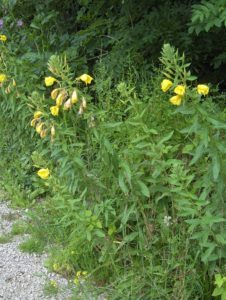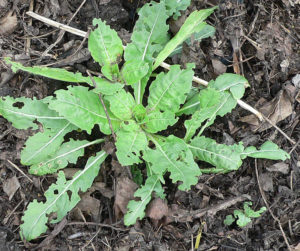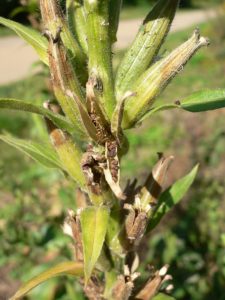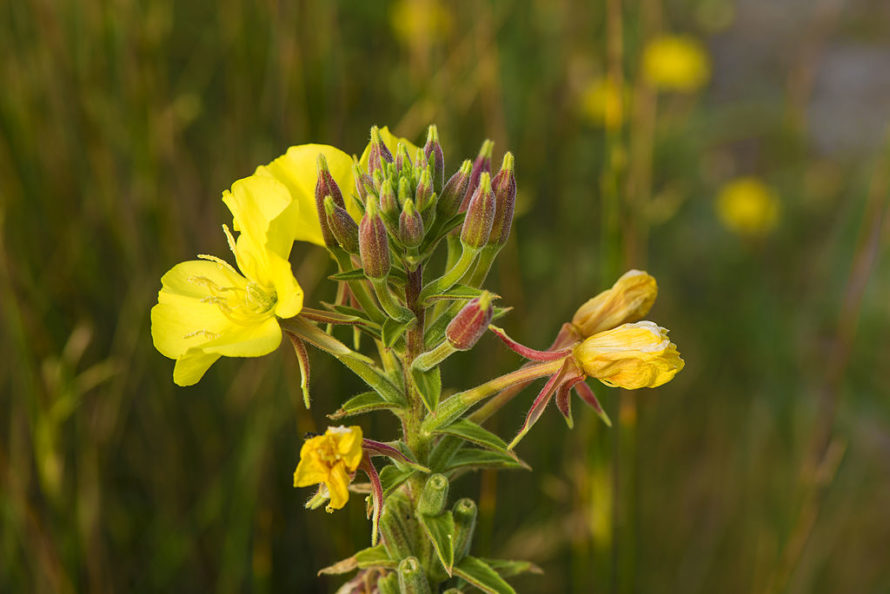
Evening primrose blooming on a roadside
Evening primrose (Oenothera biennis) is one of many species of Oenothera which are native all over North America. Only O. biennis is the source of Gamma-Linolenic acid (GLA), also known as evening primrose oil, which is popular for the treatment of cramps and other menstrual symptoms.
The Native Americans living in North America used evening primrose as both a culinary and a medicinal herb. They brewed it into a tea which was used to treat laziness and combat weight gain. Virtually the entire plant is edible. The roots, leaves and stems can be cooked or eaten raw. The flower buds and flowers are eaten raw. The seeds can be used like sesame seeds and roasted.
Evening primrose oil is found in the seeds. Each mature seed is 7% to 10% oil. There is no scientific proof that the oil has any therapeutic effects. The British Medical Journal calls it “a remedy for which there is no disease.” The American Cancer Society says that there is no evidence that it is an anti-cancer treatment for which it is frequently recommended.
 Evening primrose is a biennial. The first year it grows a rosette of leaves which are followed in the second year by a flowering stalk that can be 1 to 5 feet tall. The plants are drought tolerant, often found growing in wastelands and other abandoned areas. They prefer full sun but will tolerate partial shade. When shaded, the flower stalks don’t grow as tall. The flowers are yellow and appear in late summer and early fall. They bloom from the bottom of the stalk to the top, opening in the cool of the evening then closing in the heat of the day. The flowers attract bees, butterflies and, at night, moths.
Evening primrose is a biennial. The first year it grows a rosette of leaves which are followed in the second year by a flowering stalk that can be 1 to 5 feet tall. The plants are drought tolerant, often found growing in wastelands and other abandoned areas. They prefer full sun but will tolerate partial shade. When shaded, the flower stalks don’t grow as tall. The flowers are yellow and appear in late summer and early fall. They bloom from the bottom of the stalk to the top, opening in the cool of the evening then closing in the heat of the day. The flowers attract bees, butterflies and, at night, moths.
 After the flowers fade, they are replaced by capsules that contain the tiny seeds. The seeds are an important food source for birds.
After the flowers fade, they are replaced by capsules that contain the tiny seeds. The seeds are an important food source for birds.
It is very easy to grow evening primrose from seed. In fact, it can become invasive, taking over your garden.
Surface sow the seeds (they need light to germinate) in the spring or the fall. Germination will occur in 2 to 3 three weeks. There is no need to keep the seeds watered because this is a drought tolerant plant. Remember, this is a biennial so you will only get a rosette of leaves the first year. The flowers will appear in the second year. I recommend seeding two years in a row to ensure you have flowers every year.

